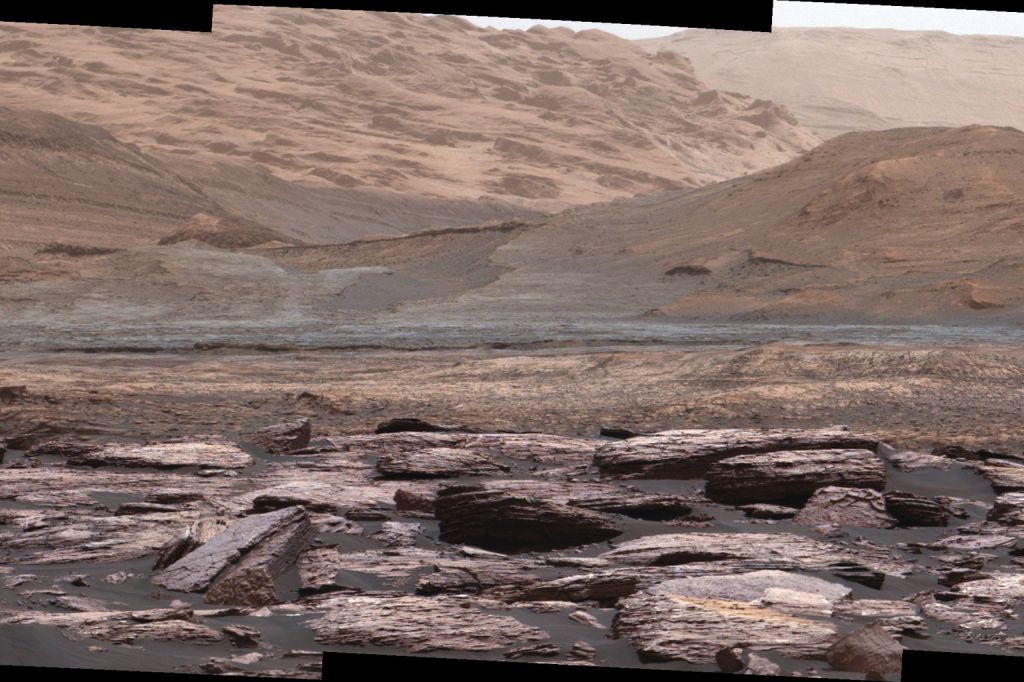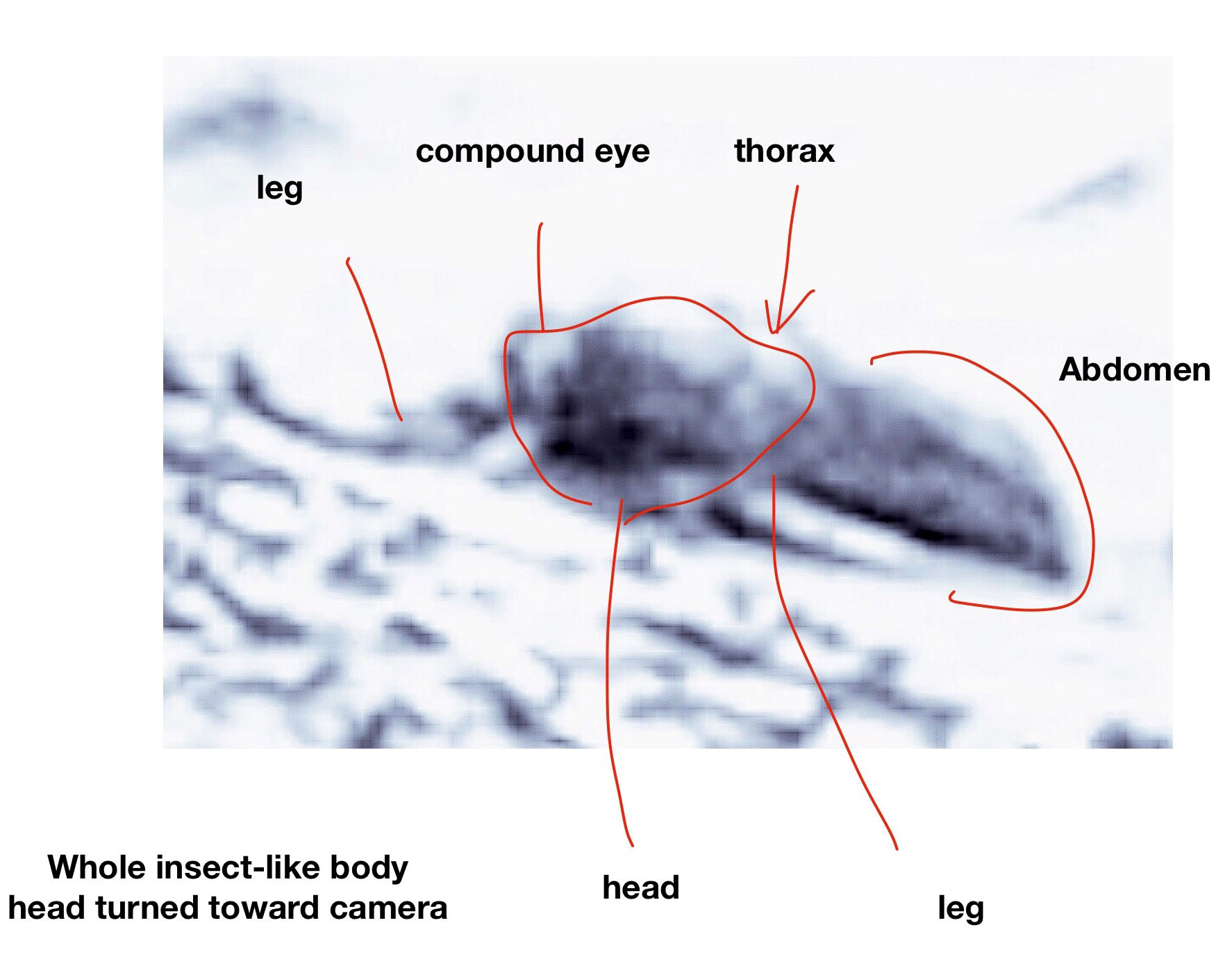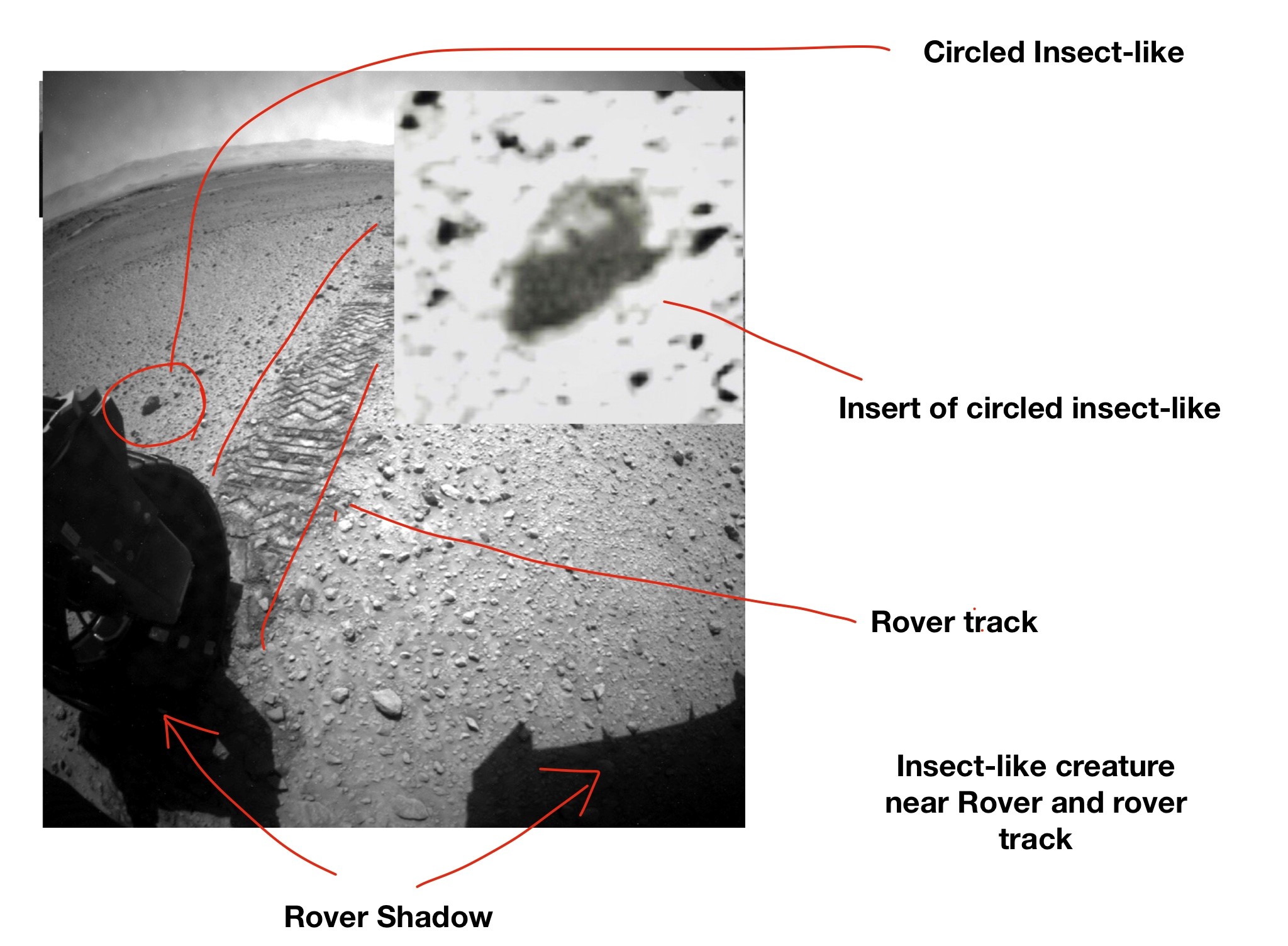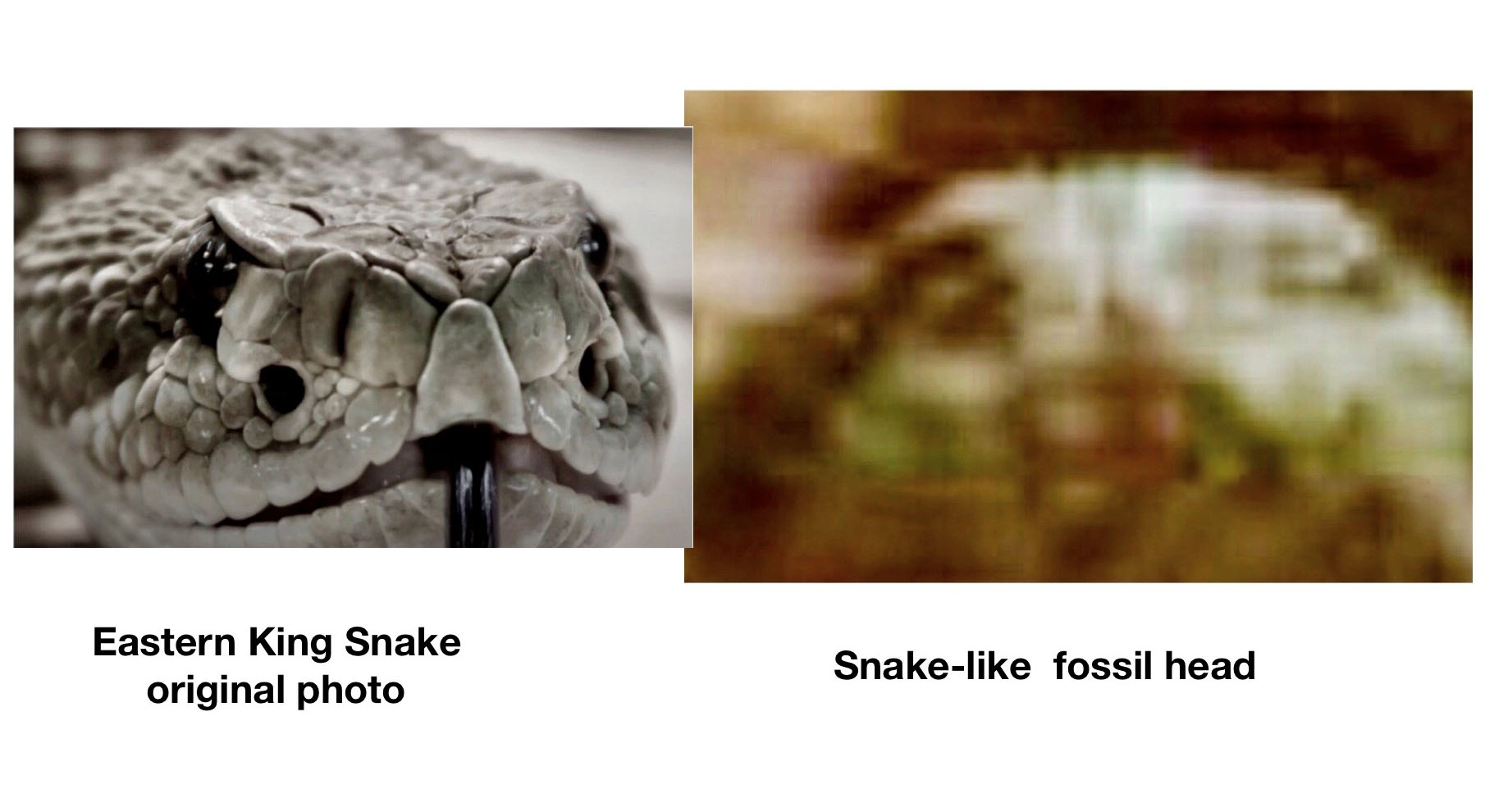It's Still Not Aliens: 'Mars Bug' Claim Could Damage the Search for Life
"It takes away the excitement from our real discoveries."

An Ohio scientist claims to have found photographic proof of "insect and reptile-like" life on Mars. But, as always, it's not aliens, other researchers say.
William Romoser, a professor emeritus who specializes in arbovirology (the study of viruses transmitted by arthropods) and entomology at Ohio University, has compiled photographs from NASA Mars rovers that he says are evidence of life on Mars. "There has been and still is life on Mars," Romoser said in a statement.
But Romoser's evidence for this alleged Martian life comes only from his interpretation of these photographs. As he asserts in the findings he presented on Nov. 19 at the national meeting of the Entomological Society of America, the images show the shapes of life-forms that look similar to reptiles and bee-like insects. According to the statement, these observations are of both fossilized and living creatures on the surface of Mars.
Related: The Search for Life on Mars (a Photo Timeline)
More: 5 Bold Claims of Alien Life

"There is apparent diversity among the Martian insect-like fauna, which display many features similar to Terran insects that are interpreted as advanced groups — for example, the presence of wings, wing flexion, agile gliding/flight, and variously structured leg elements," Romoser said about the supposed life-forms.

Seeing things on Mars
Now, if you really squint at these images and have already read that someone else thinks that they look like insects and reptiles, you might think they look like insects and reptiles, too. But, according to David Maddison, a professor in the integrative biology department at Oregon State University, this "proof" is likely just an example of pareidolia, a phenomenon in which people see patterns in random data.
"I, personally, have pareidolia with respect to insects, beetles in particular," Maddison told Space.com in an email. "I've worked on beetles for decades; I have collected many thousands of beetles around the world. Through the years I have built into my brain a pattern-recognition system for picking out beetles."
Related: Mars Illusions: The 'Face on Mars' and Other Optic Tricks
Get the world’s most fascinating discoveries delivered straight to your inbox.

"However," Maddison added, "there is a rate of false positives — my 'seeing' beetles where there are none, which I realize when I investigate further. The false positives are usually fairly low toward the end of a field trip, as I retrain my brain, but in some circumstances — i.e., a lack of beetles in the environment — that rate of false positives is higher, as my eyes don't naturally get drawn to the real beetles, instead latching on to whatever beetle-like blob is out in the landscape.
"I do not think there are insects on Mars. The photographs that are in that press release you sent are entirely unconvincing, as they fall within the range expected in zillions of non-insect objects photographed in lowish resolution on a Marscape," Maddison said. "It is vastly more parsimonious to presume the blobs are simply rocks. As has been said, 'extraordinary claims require extraordinary evidence'; those pictures are far, far less than extraordinary."
And simply pointing out suggestive shapes in NASA photos may not be the best way to draw conclusions in the search for life beyond Earth.
"I think it's really easy to find patterns in images, especially when they're out of context," Nina Lanza, a planetary scientist at Los Alamos National Laboratory, told Space.com. "They're little clips of larger images and there's no scale bar on them ... you could imagine a lot of different shapes in there. That's not a good way to do this kind of assessment."
Space.com reached out to Ohio University for comment on Romoser's study, but did not receive a response as of press time.
Related: Discovering Extraterrestrial Life Would Be Slow and Uncertain
Putting things in perspective
Researchers continue to extensively study the Martian landscape, soil, history and atmosphere. And, while scientists actively search for signs of life, compiling data that might one day serve as evidence for past or present life on Mars or beyond, there exists no concrete proof of any life-forms on Mars (or elsewhere beyond Earth).
"That's just the way it is. We haven't yet been able to make that statement, but we are looking," Lanza said. "We are just as excited, we want to do this too! We are going to tell you as soon as we find life."
Regarding Romoser's work and assertion that there is proof of life on Mars, NASA officials responded to Space.com with the following statement:
"The collective general opinion of the large majority of the scientific community is that current conditions on the surface of Mars are not suitable for liquid water or complex life. As part of its astrobiology objectives, one of NASA's key goals is the search for life in the universe and the Mars 2020 rover, launching next summer, is our next stage in exploring the potential of past life on the Red Planet.
"Although we have yet to find signs of extraterrestrial life, NASA is exploring the solar system and beyond to help us answer fundamental questions, including whether we are alone in the universe. From studying water on Mars, probing promising "oceans worlds," such as Enceladus, Europa, and Titan to looking for biosignatures in the atmospheres of planets outside our solar system, NASA's science missions are working together with a goal to find unmistakable signs of life beyond Earth."
The harm that dubious claims can cause
To scientists like Lanza and Maddison, the fact that this claim is not truly "proof" of life on Mars is obvious. But to the untrained eye, to the person who might only have time to skim the headline on his or her commute home, overblown claims like this can be damaging.
"When we have this kind of sensationalist headline, it's really hard for the public to know whether or not this is true," Lanza said. "It seems legitimate, it's coming from Ohio University, these are real institutions and so … when we actually find something on Mars and beyond, if we do that, it will be less of an impact … people keep hearing 'we've already found life on Mars.'"
"It takes away the excitement from our real discoveries," she added.
- Mars Explored: Landers and Rovers Since 1971 (Infographic)
- Ancient Mars Could Have Supported Life (Photos)
- The 6 Most Likely Places to Find Alien Life
Follow Chelsea Gohd on Twitter @chelsea_gohd. Follow us on Twitter @Spacedotcom and on Facebook.

Chelsea Gohd joined Space.com as an intern in the summer of 2018 and returned as a Staff Writer in 2019. After receiving a B.S. in Public Health, she worked as a science communicator at the American Museum of Natural History. Chelsea has written for publications including Scientific American, Discover Magazine Blog, Astronomy Magazine, Live Science, All That is Interesting, AMNH Microbe Mondays blog, The Daily Targum and Roaring Earth. When not writing, reading or following the latest space and science discoveries, Chelsea is writing music, singing, playing guitar and performing with her band Foxanne (@foxannemusic). You can follow her on Twitter @chelsea_gohd.



